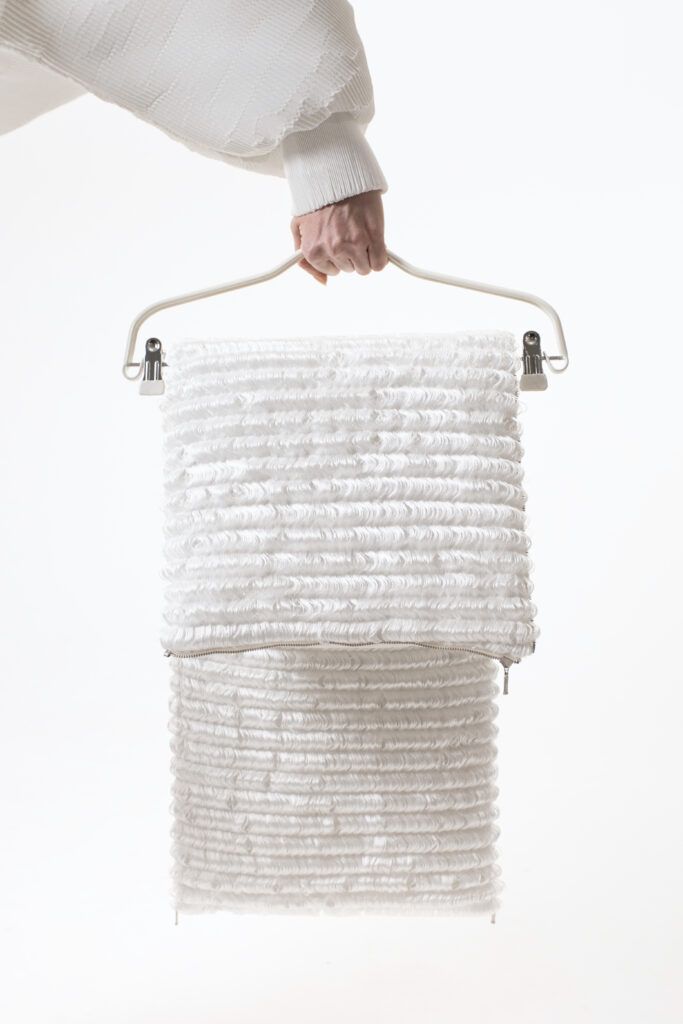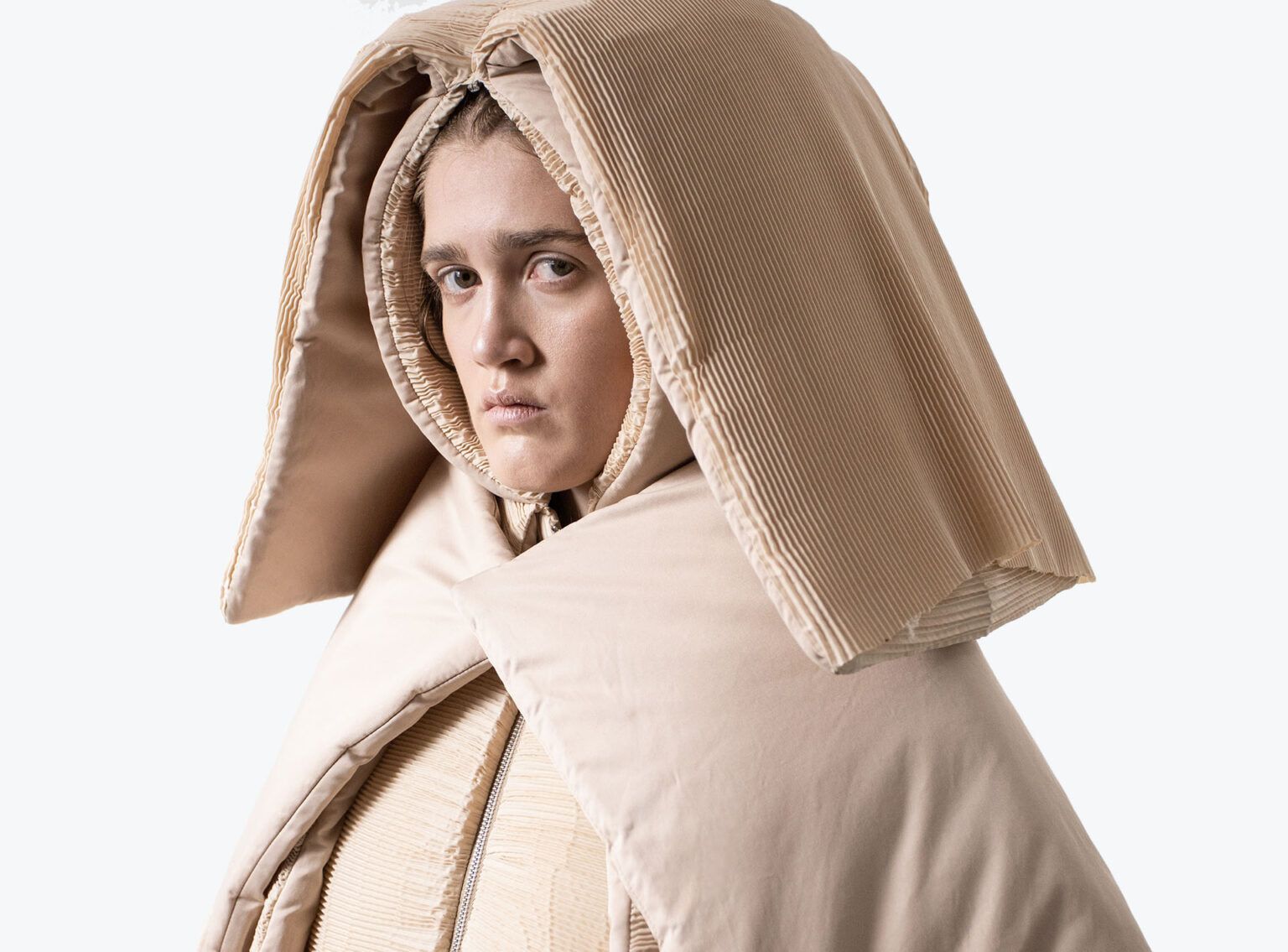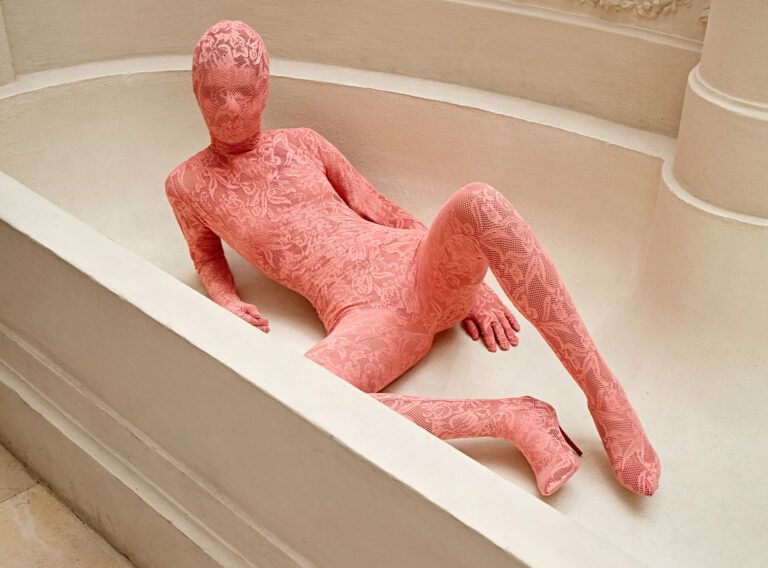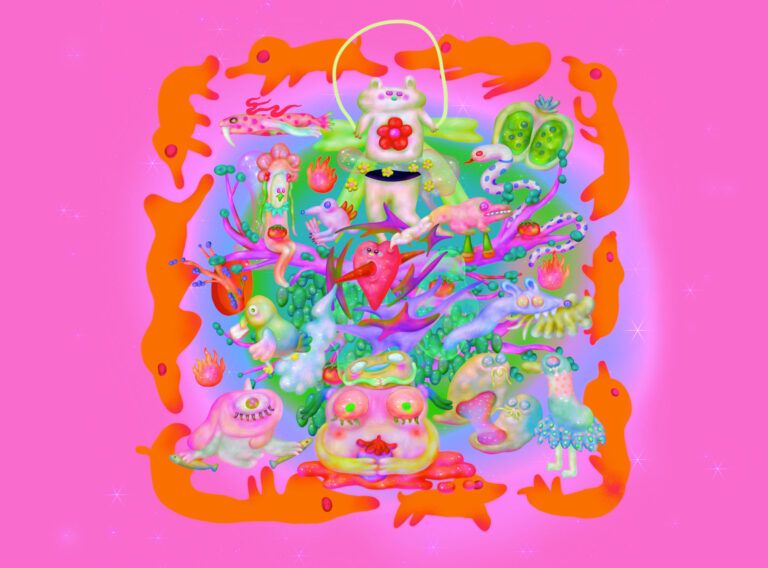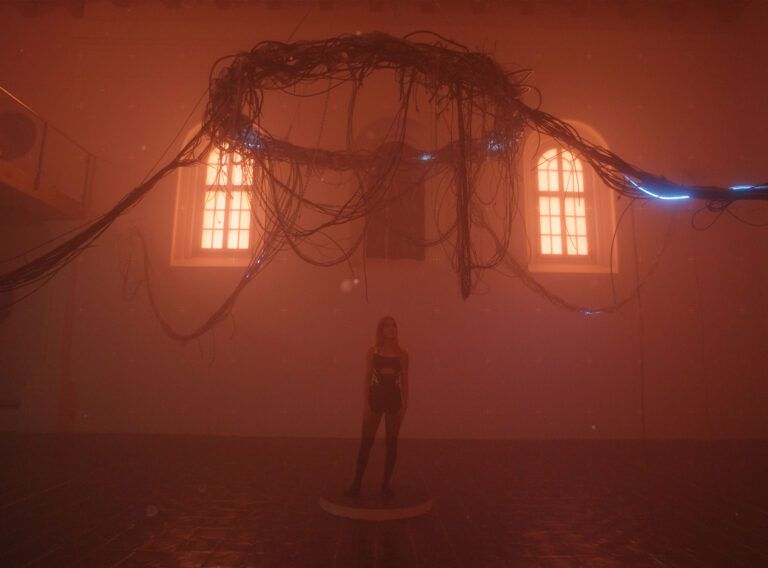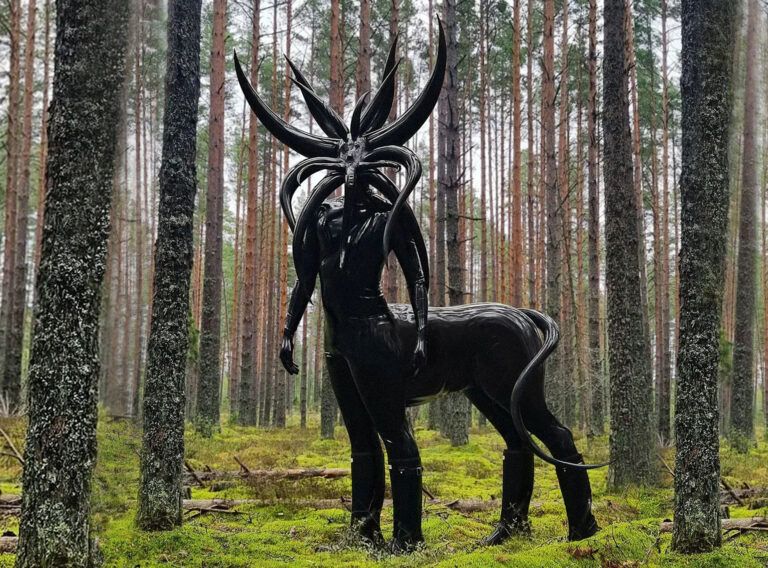What do you seek to add to the world as a conceptual designer?
For a conceptual brand, it is crucial to walk its own path, sustain its own principles, and not to give up when it’s not working. At DZHUS, we strive to come up with innovations aimed at changing the very approach to consumption of a fashion product. Thus, in my design work, I focus on inventing pattern-making principles that allow an unprecedentedly versatile use of a single garment or accessory, often with the possibility of transition from one category to another. In our collections, you’ll find trousers that can become a dress or a coat, hats that turn into bags or vests, scarves and even jewellery transformable into clothing, and many other examples of function-focused concepts. I had always been anxious about the short life of the packaging until I’ve designed a tote bag that could not only be reused but also worn as a top – since then, our customers receive their orders wrapped in this complimentary piece that they will less likely want to throw away.
I’m convinced that in the current era of overproduction, everyone involved must start thinking of how they personally can help reduce the harmful impact on the environment. And that’s where multipurpose clothing can be of unparalleled assistance. Why sacrifice style experiments for the sake of conscious living when it’s possible to opt for a few transformer outfits that will also limit your physical wardrobe and provide an endless potential for self-expression? Speaking of ethical matters, we’ve always aimed to achieve a highly multi-ethnic casting, and, along with that, we prioritise a gender-inclusive approach to pattern-making, to fulfil the expectations of our diverse audience. Our main value, however, has always been humane treatment of animals, and, naturally, since DZHUS’ launch in 2010, all our products have been cruelty-free.

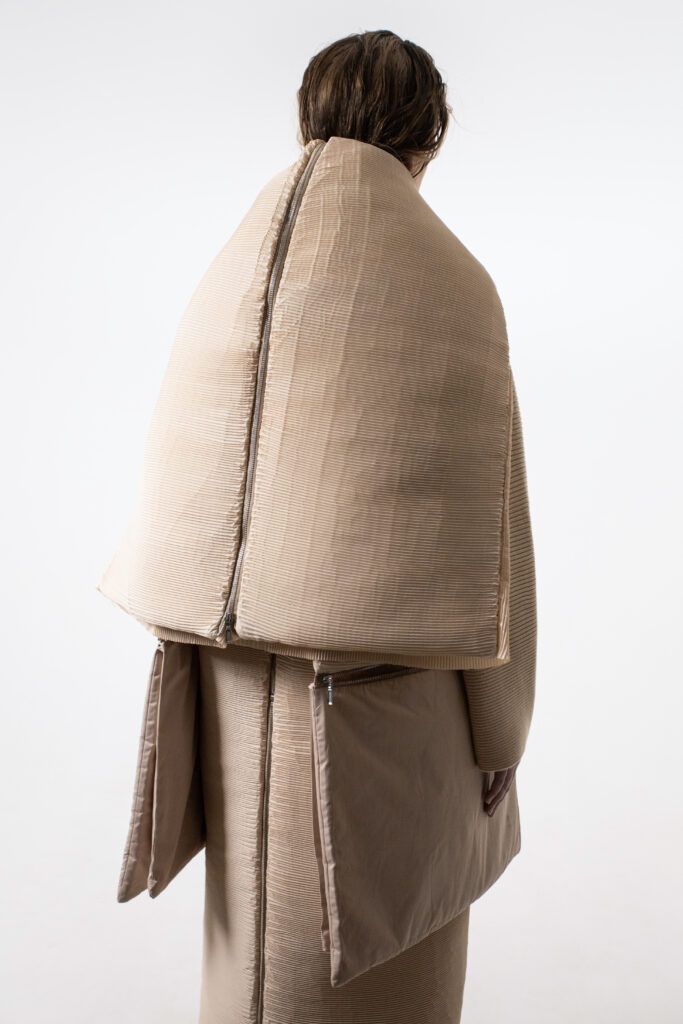
What is your brand’s overall message?
Our pattern-making innovations help minimise customers’ shopping needs and create a versatile wardrobe using just a few variable garments. In my opinion, unified items with unprecedentedly extended functionality are an innovative solution for conscious consumption, with focus on creation, not limitation.
Due to the Russian attack on Ukraine, you had to flee your homeland. It must have been a difficult experience. Can you share the challenges you had to deal with to keep the brand running?
I was lucky enough to have escaped the war at its very beginning and find my refuge in the EU. When I’ve partly recovered from the overwhelming outrage and desperation, I began to get integrated into the new reality from both the professional and personal perspective. Thus, I ended up working between Warsaw, Paris, and Berlin, with frequent projects in Milan and Brussels. Speaking about the DZHUS brand, it will always remain Ukrainian at its core, and very cosmopolitan alongside that – just like myself.
I’ve initiated a charity sale of the evacuated DZHUS products and, after a while, resumed the activity of our Ukraine-based production, cooperating remotely with those of our team who remained in the country. I’ve made the charity matter a regular thing, so since my relocation, DZHUS has been donating 30% of the sales profit to Ukrainian animal rights organisations as well as the servicepeople.
Although I designed the AW23 collection in a refuge, orders are still being produced in Ukraine, as I feel it is my duty to give jobs to our craftswomen in these extreme circumstances. To say it’s been difficult covers nothing. For instance, this winter meant nearly a complete blackout, resulting in rare access to equipment and, therefore, failed deadlines, let alone the poor mental conditions of my collaborators. The war has insulted pretty much all the aspects of our business, from sourcing and logistics to our reputation itself, as we became, in fact, a risky partner for our collaborators from abroad.
We are incredibly grateful to our clients from all over the world for their loyalty regardless of the force-majeure circumstances. I must admit that the quantity of orders has, nevertheless, decreased, because of multiple risk factors. The supply chains have been interrupted severely and the delivery of the finished products to the customers takes much longer now.
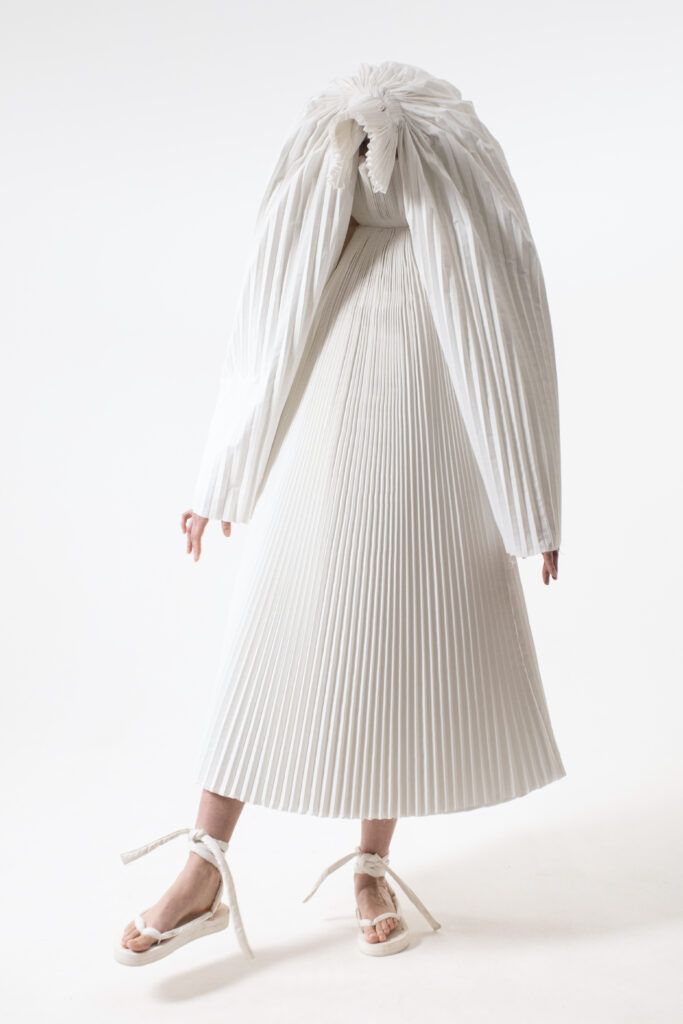
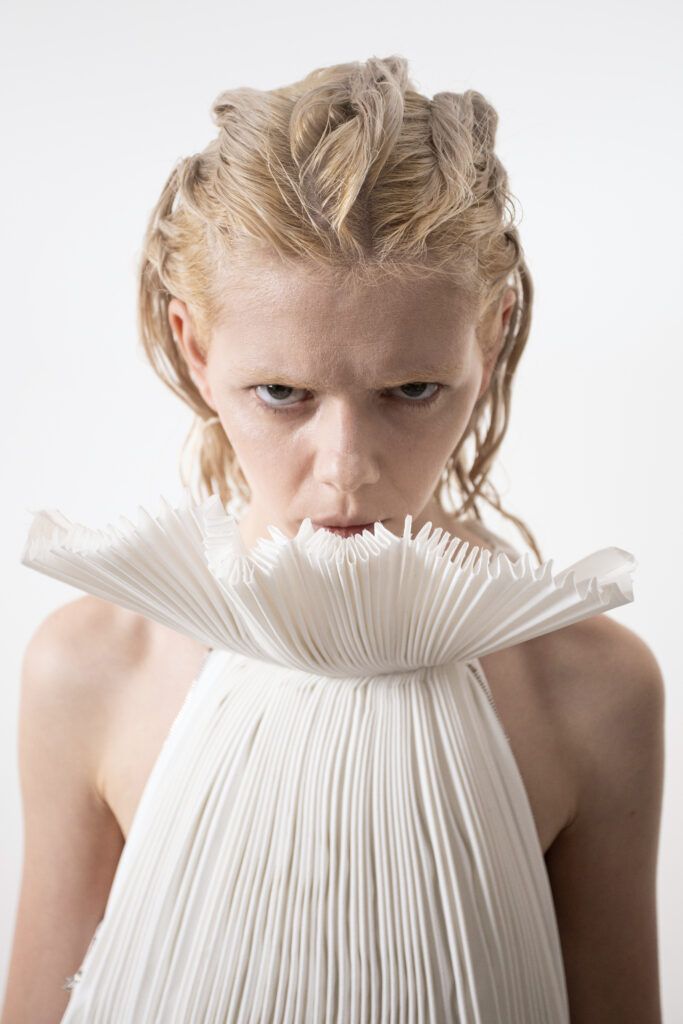
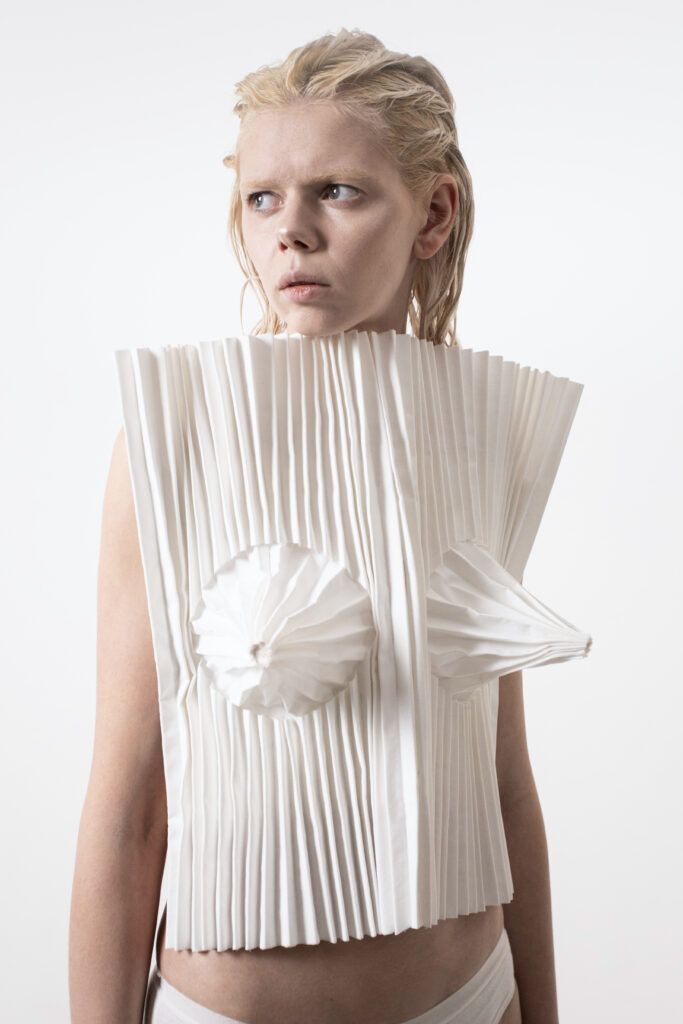
What keeps you motivated?
Having recovered from the initial shock, I feel multiplied motivation to come up with new ideas and fulfil them in a way to not only enrich the industry but also support my compatriots as much as I can. I feel it is my duty to keep drawing the world’s attention to the tragic events in my country along with celebrating the unbreakable power of our people – all through my allegoric creations.
Besides, I also feel it is my mission to popularise cruelty-free ideology DZHUS communicates through its products. By presenting our animal-friendly garments to the audience, we stress the necessity of being humane and future-oriented in the modern reality. By producing ethical and sustainable fashion products, which are then worn by intelligent and open-minded personalities, I aspire to prove that it is possible to look edgy and avant-garde, yet remain in peace and harmony with nature.
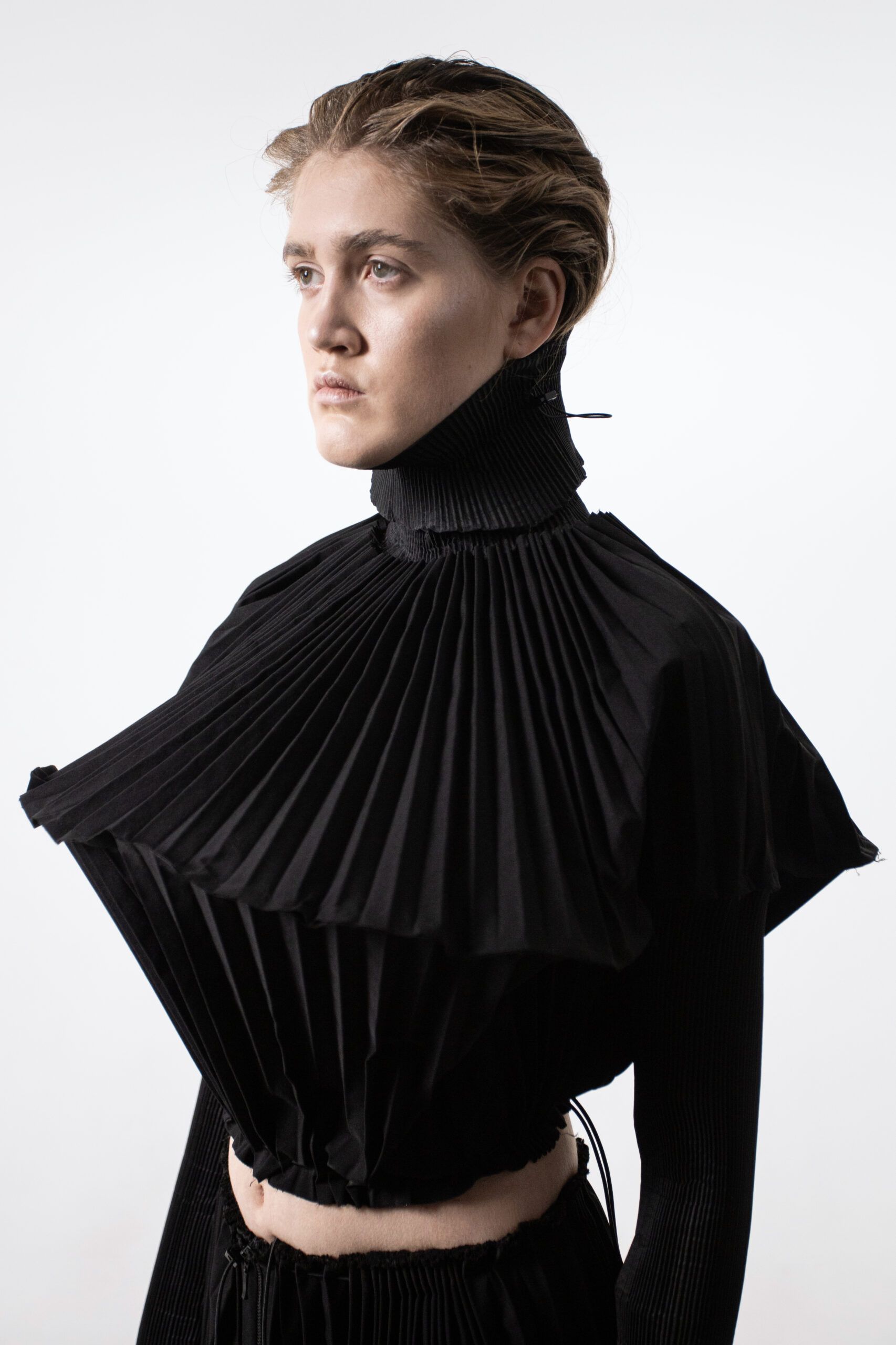

What is the ultimate source of inspiration for your designs?
Most often, I get inspired by clothing itself: the phenomenon of the garment as such, the way it interacts with the human body, and, most of all, its hidden potential for endless transformations if slightly reworked – and that’s what I do.
I’m not so much into the standardised fashion concepts that are considered to be established once and for all. I kind of decipher the classic patterns and reorganise them in a way unseen before. I add extra functions to what used to be a simple thing. I’m especially fascinated with the lining, which has such an underestimated potential, as well as details of the inside that are considered technical. Thus, our garments contain surprises: for instance, by turning a jacket’s pockets out, it is possible to form entire trousers, whereas the optional sleeves are hidden just inside the collar. There is plenty of such tricks in our collections.
Your brand’s signature is a garment metamorphosis, an architectural silhouette and a neutral colour pallete. What is your creative process?
When designing new styles, I never limit myself to sketching, considering that rather a pre-production activity. To develop a pattern of a multi-purpose wardrobe item and make it practical, it takes numerous mock-ups, fittings, and tests. Once I’m happy with both the fit and the functionality, we proceed to the sampling and produce a prototype. When it comes to innovation, there is always a huge amount of work behind each seemingly basic product.
In 2010, when I’d just started, I was focused on the visual aspect in the first place. As the brand was developing, so was my design vision, which was getting more and more thoughtful and future-oriented season after season. I realised quite quickly that there was much more behind a garment transformation than a peculiar fashion trick – it could reorganise the very system of apparel design. At that point, I’ve put a lot of effort in coming up with something innovative that could help make the industry more conscious, provided that my ideas reach their audience and the contribution is cleverly integrated in the system. Now that many years have passed since I began moving in that direction, I’m still in the process of achieving that goal – this way is neither fast, nor easy.
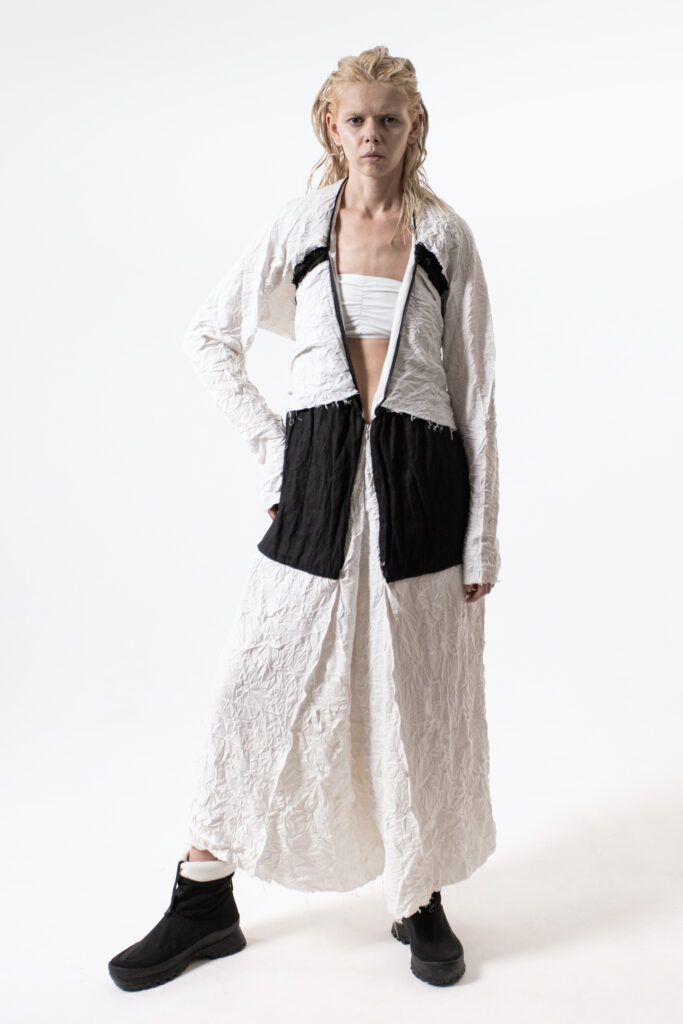
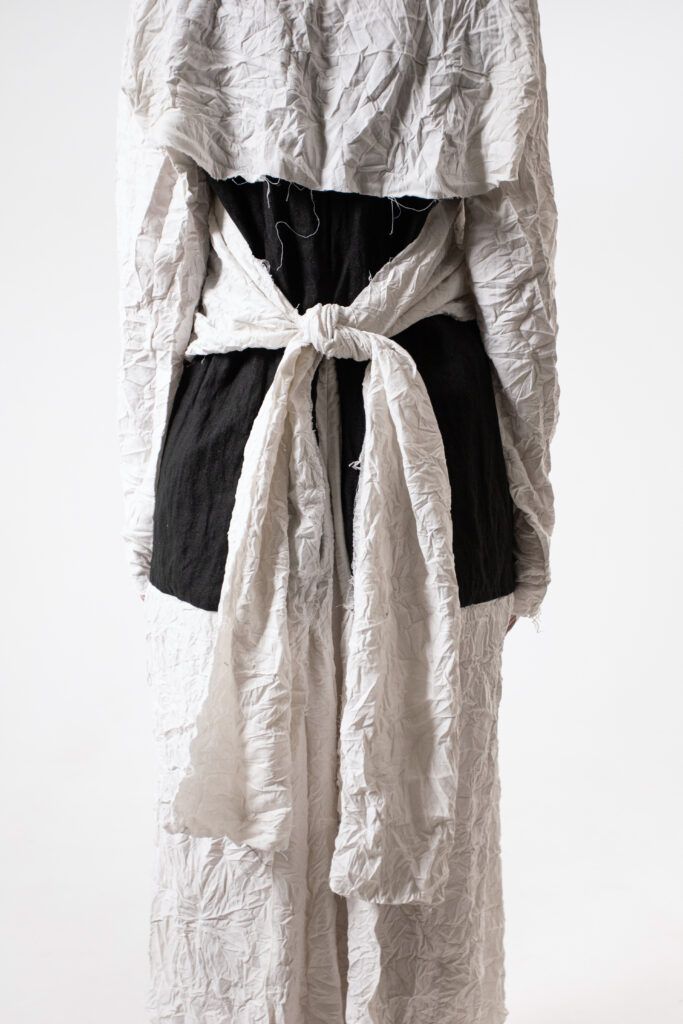
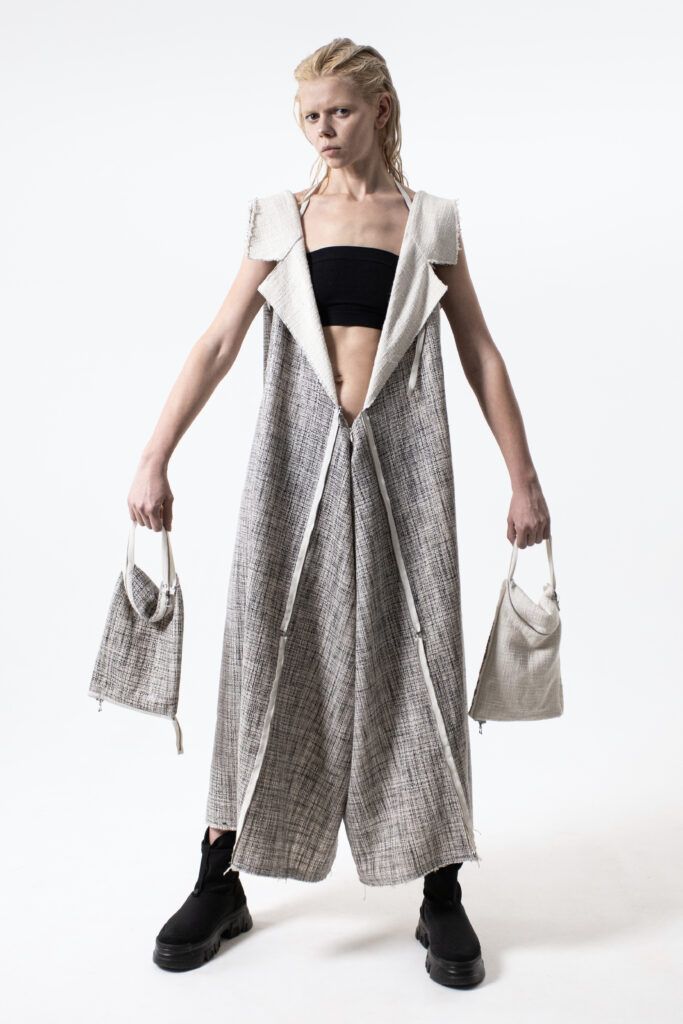
How do you envision the fashion industry’s future 100 years from now?
On the one hand, fashion is an incredibly powerful force, particularly when it comes to resistance. During the whole fashion’s history, we’ve been observing how it catches relevant socials messages, shares those with wide audiences and, therefore, changes the global attitude to crucial matters. Thus, let’s assume that fashion will be getting more and more socially responsive.
On the other hand, I believe that the future of fashion is much more about technology than trends, and such alternative solutions as multipurpose clothing can pave the way to a completely different approach to fashion. By saturating one object with options for transformation, not only do we prolong its life but also excite the wearer’s imagination and encourage them to use the garment as a key to self-expression. In this regard, it’s possible to forecast a certain unification of wardrobe categories for the sake of sustainable living.
